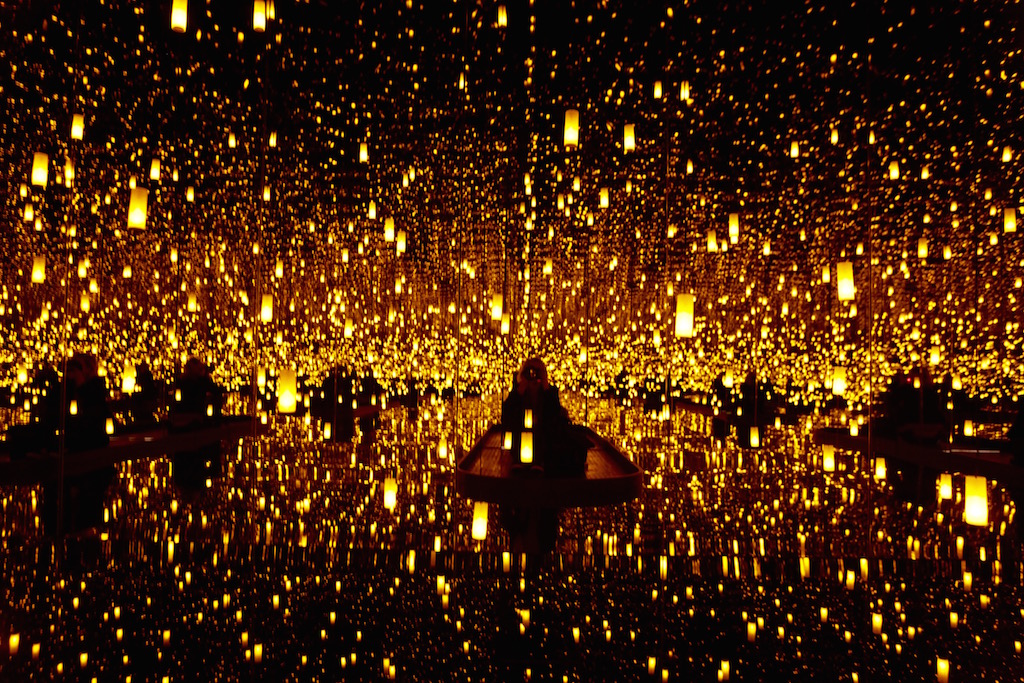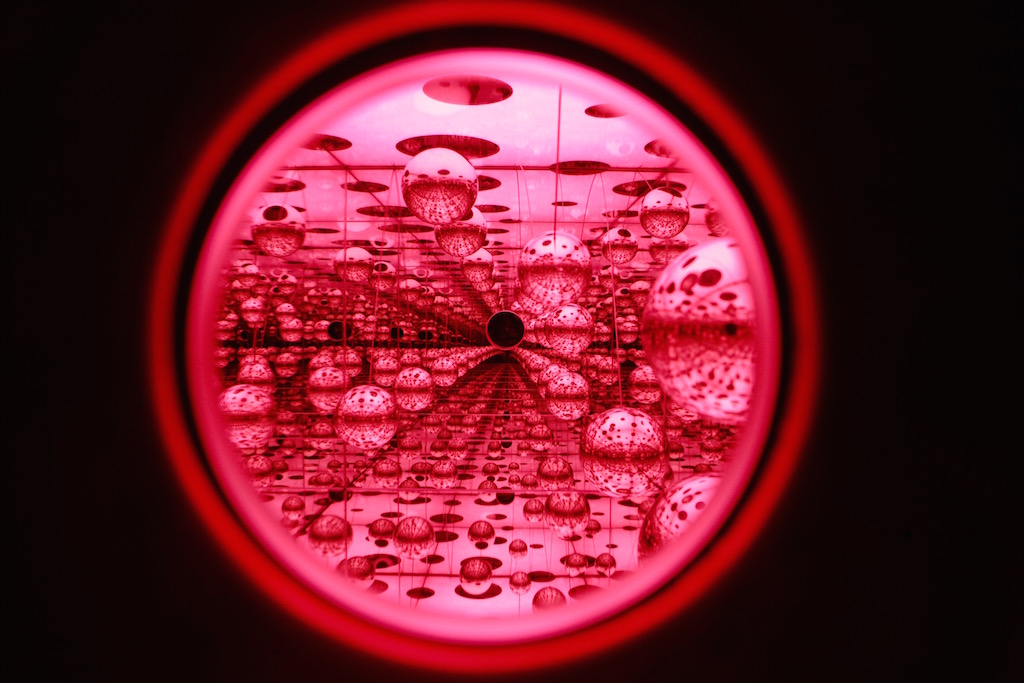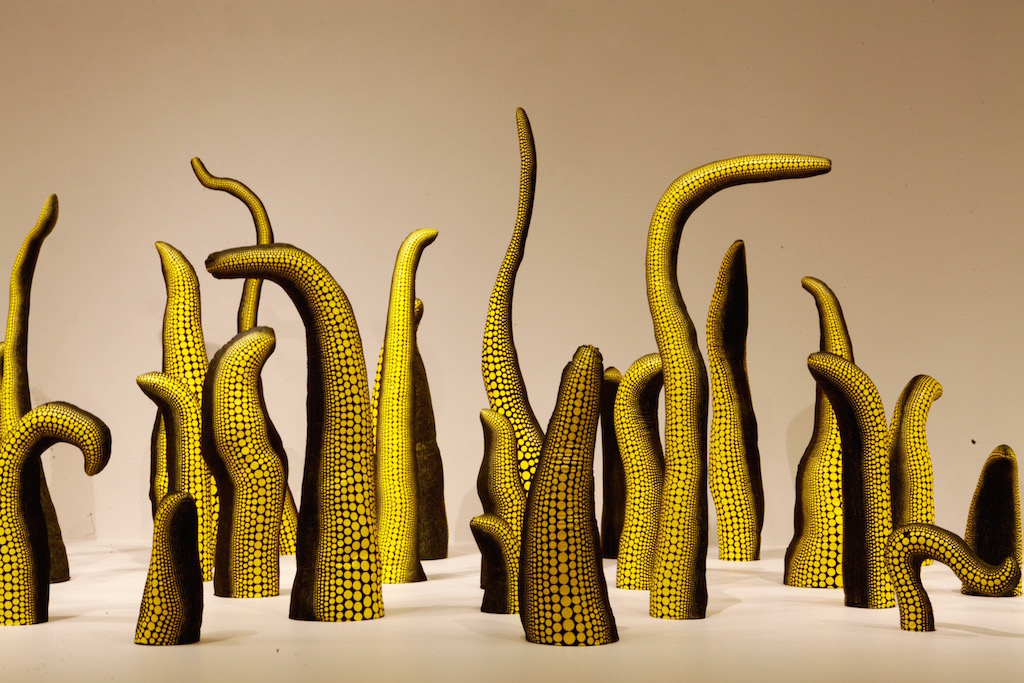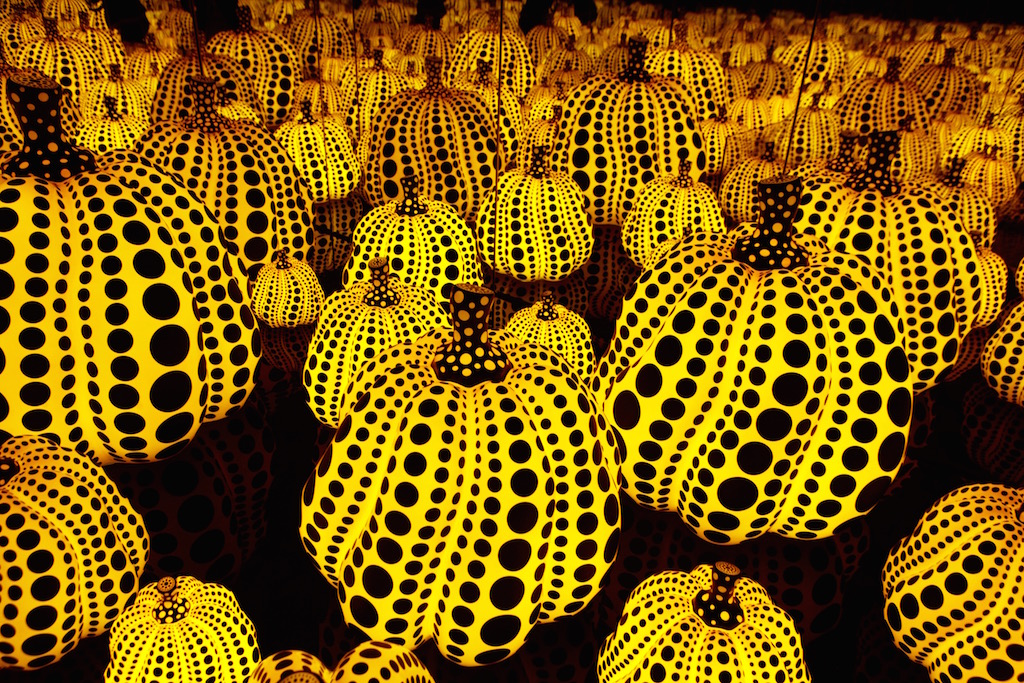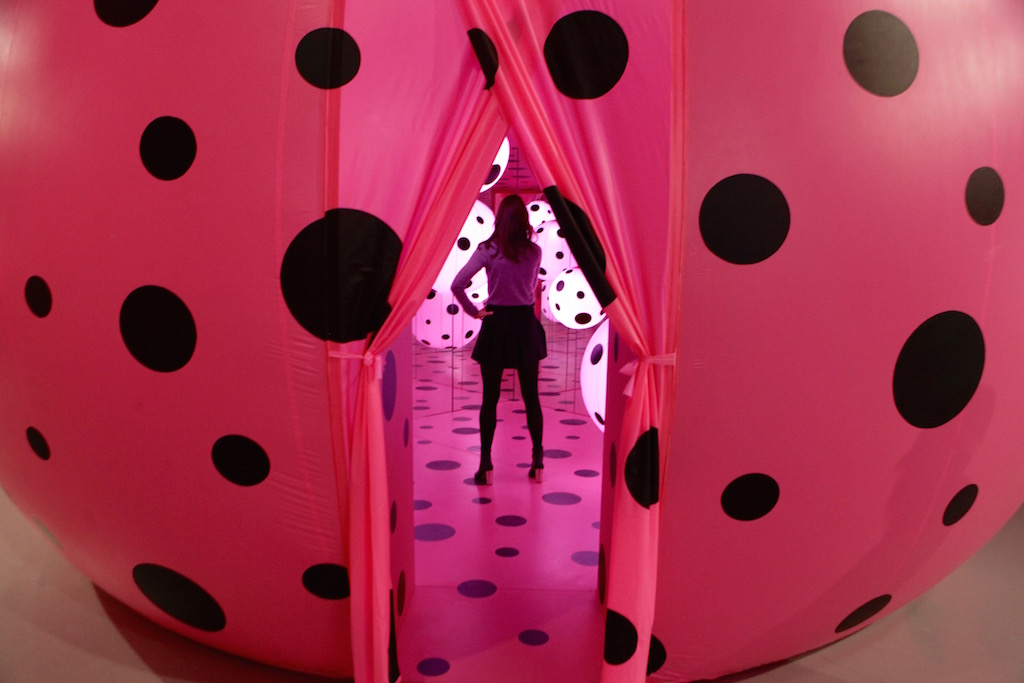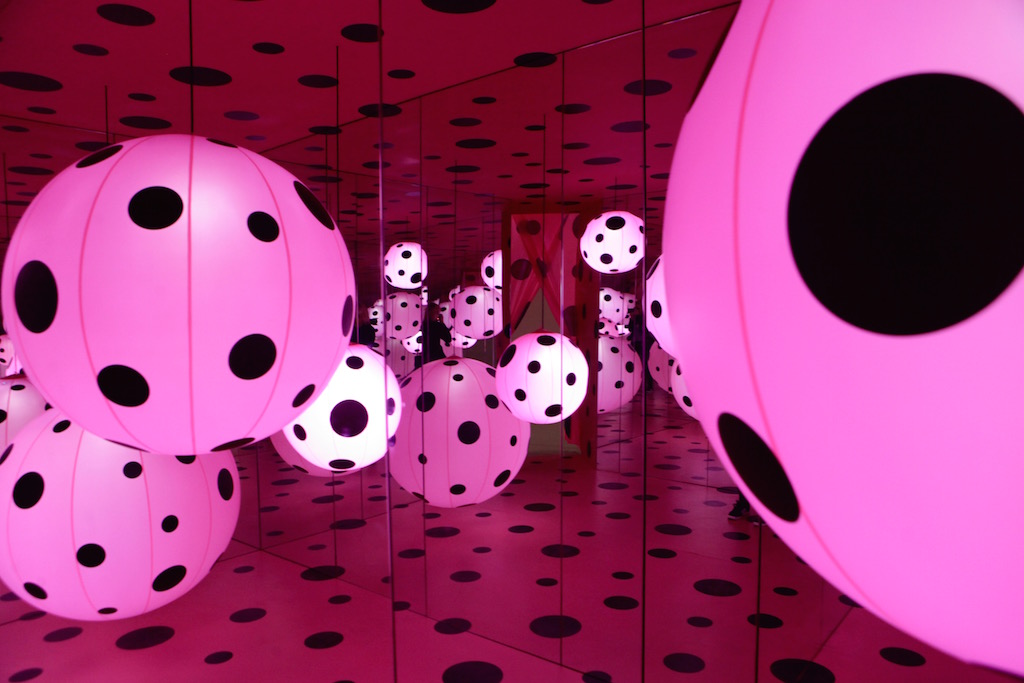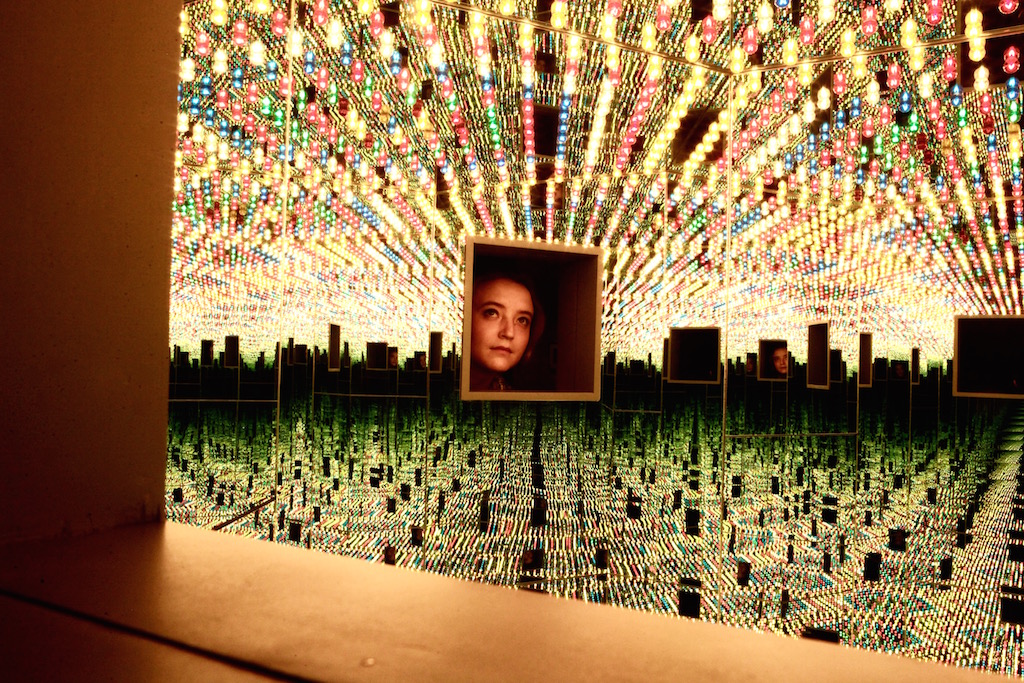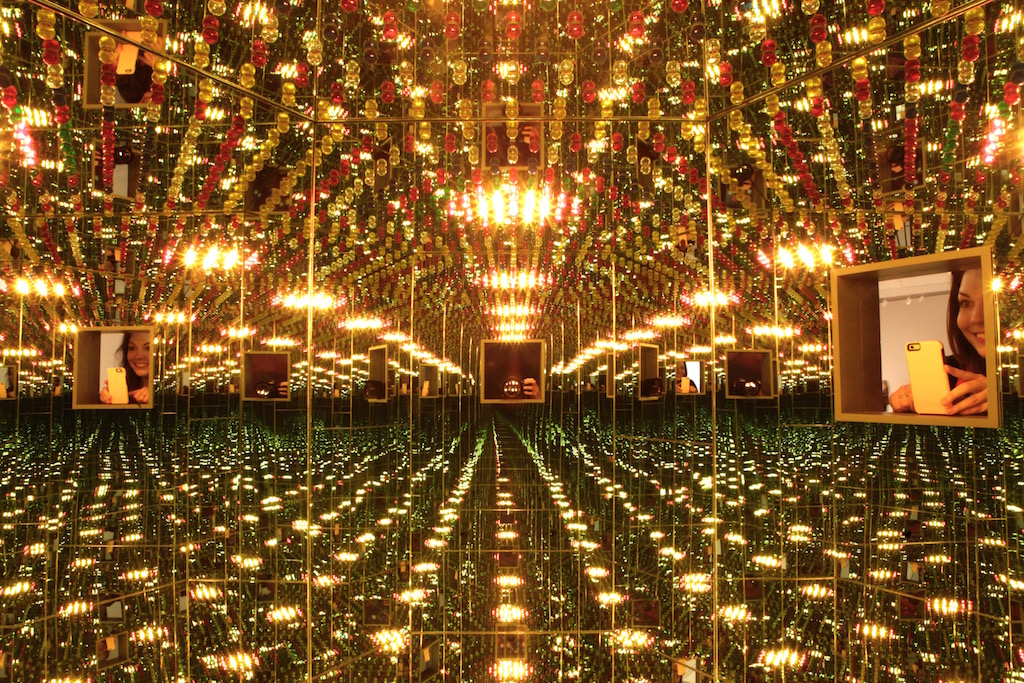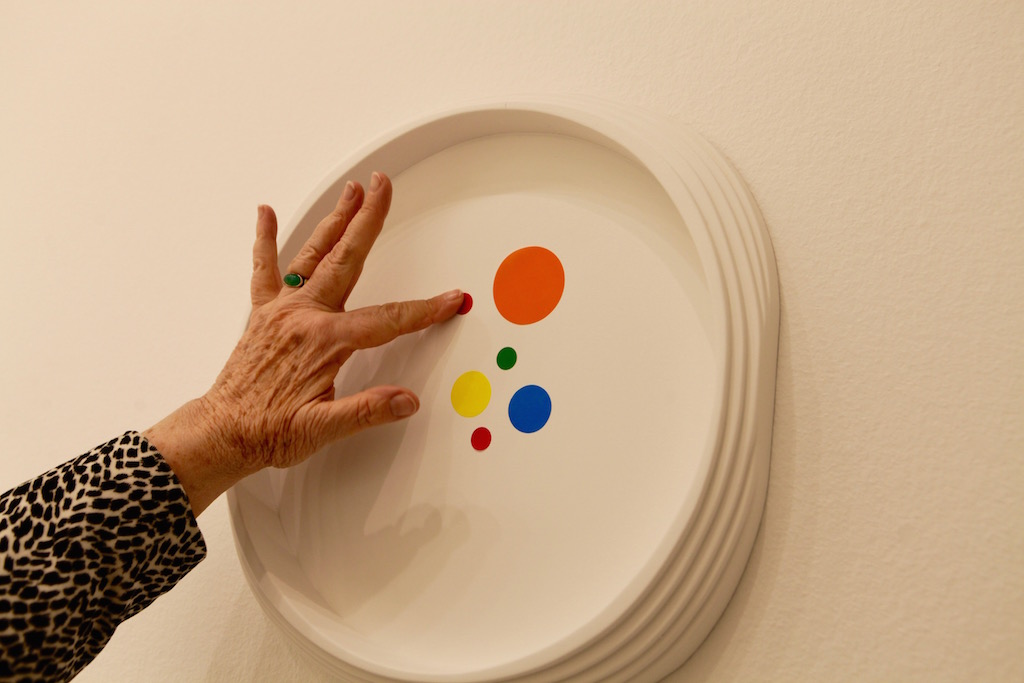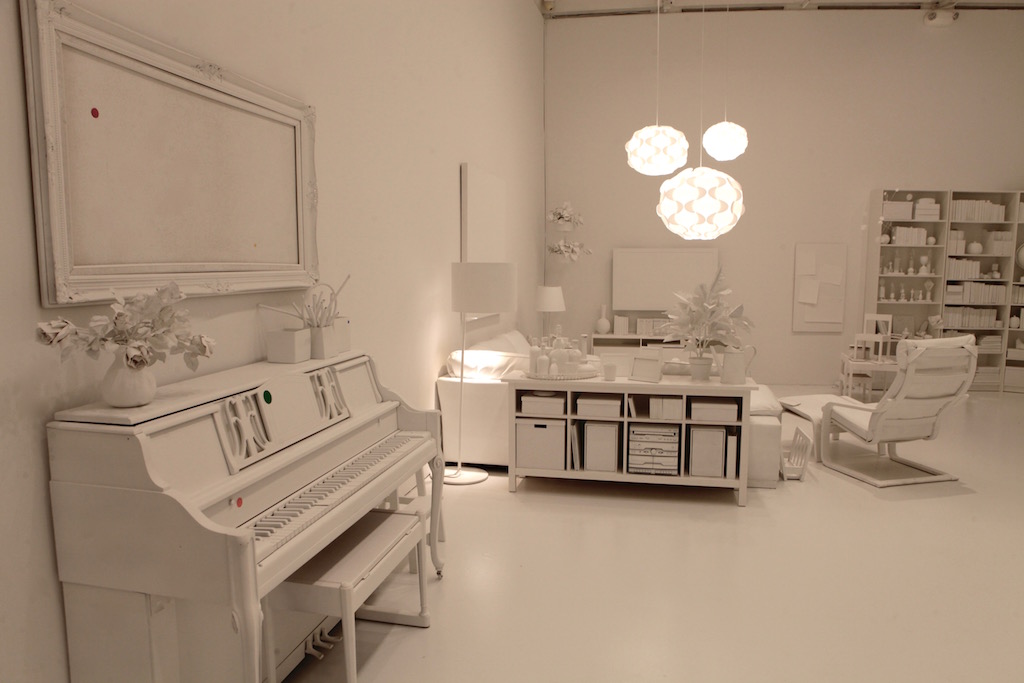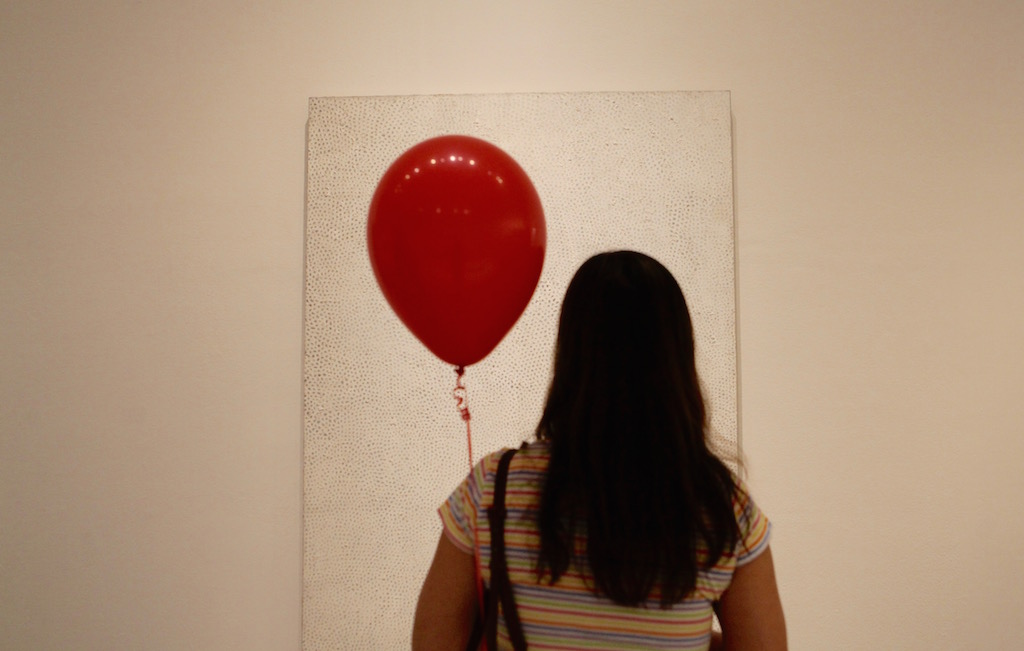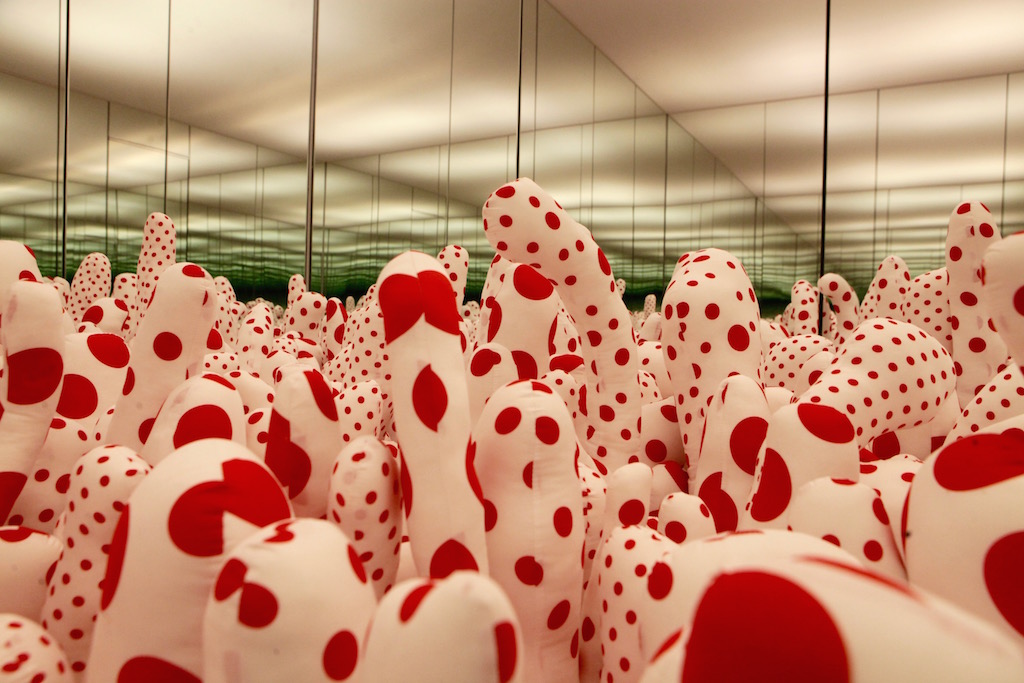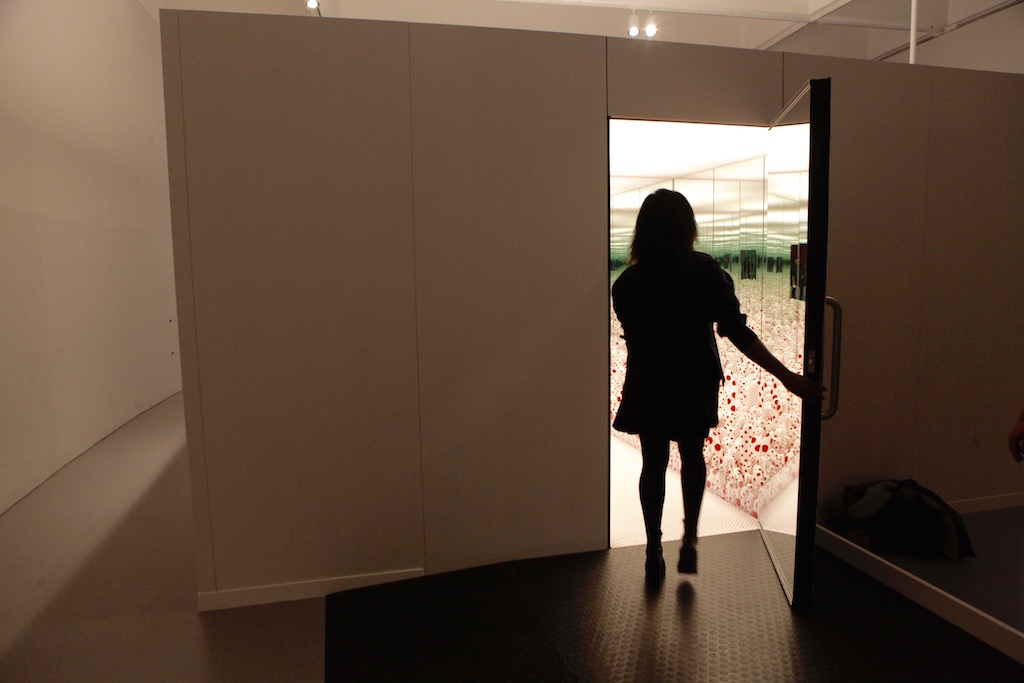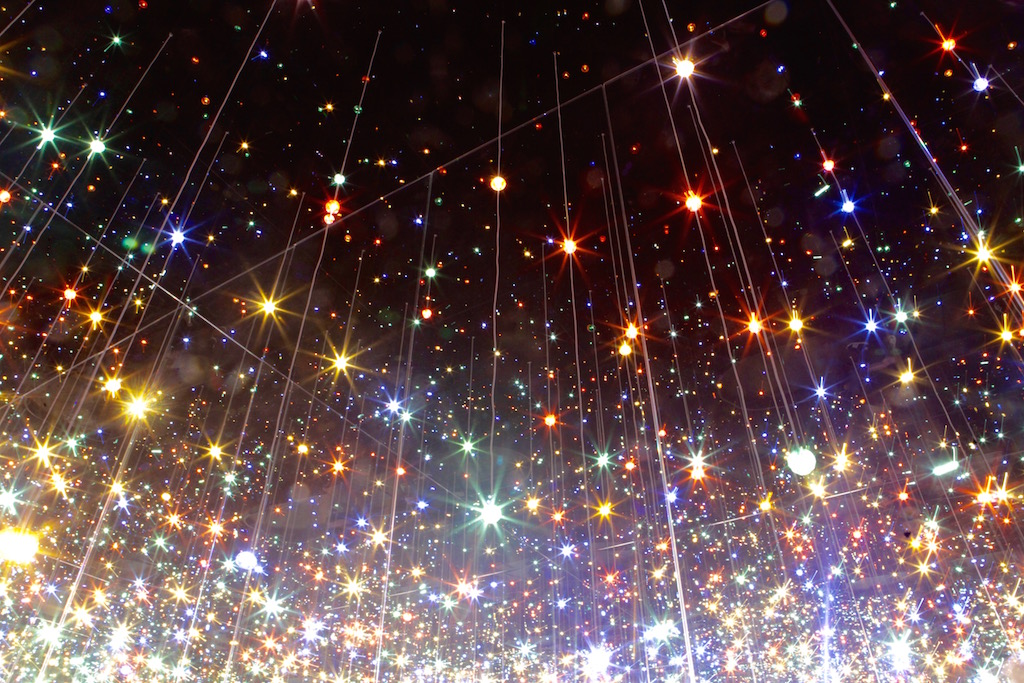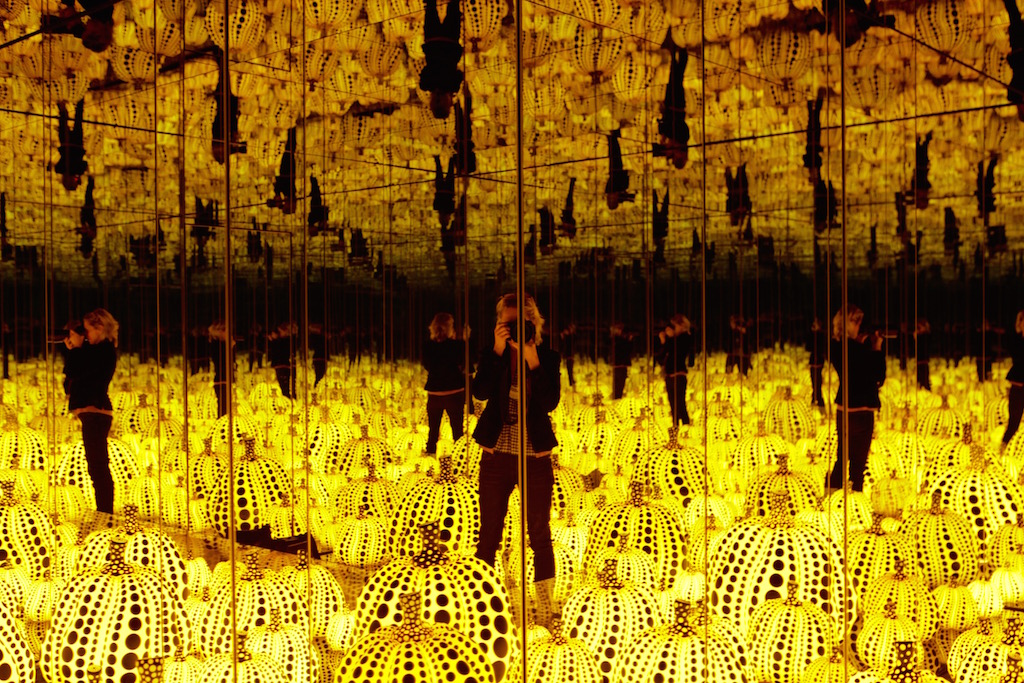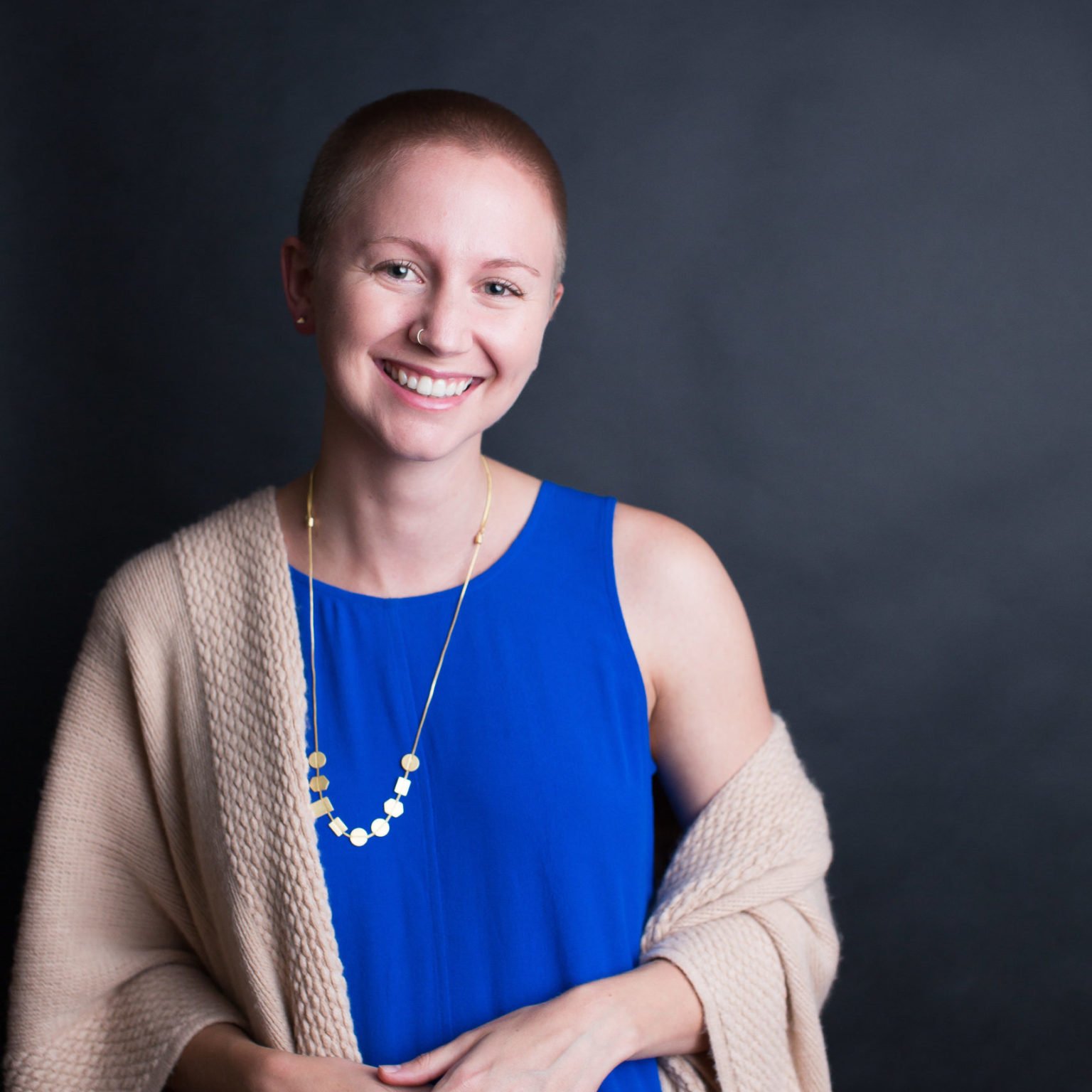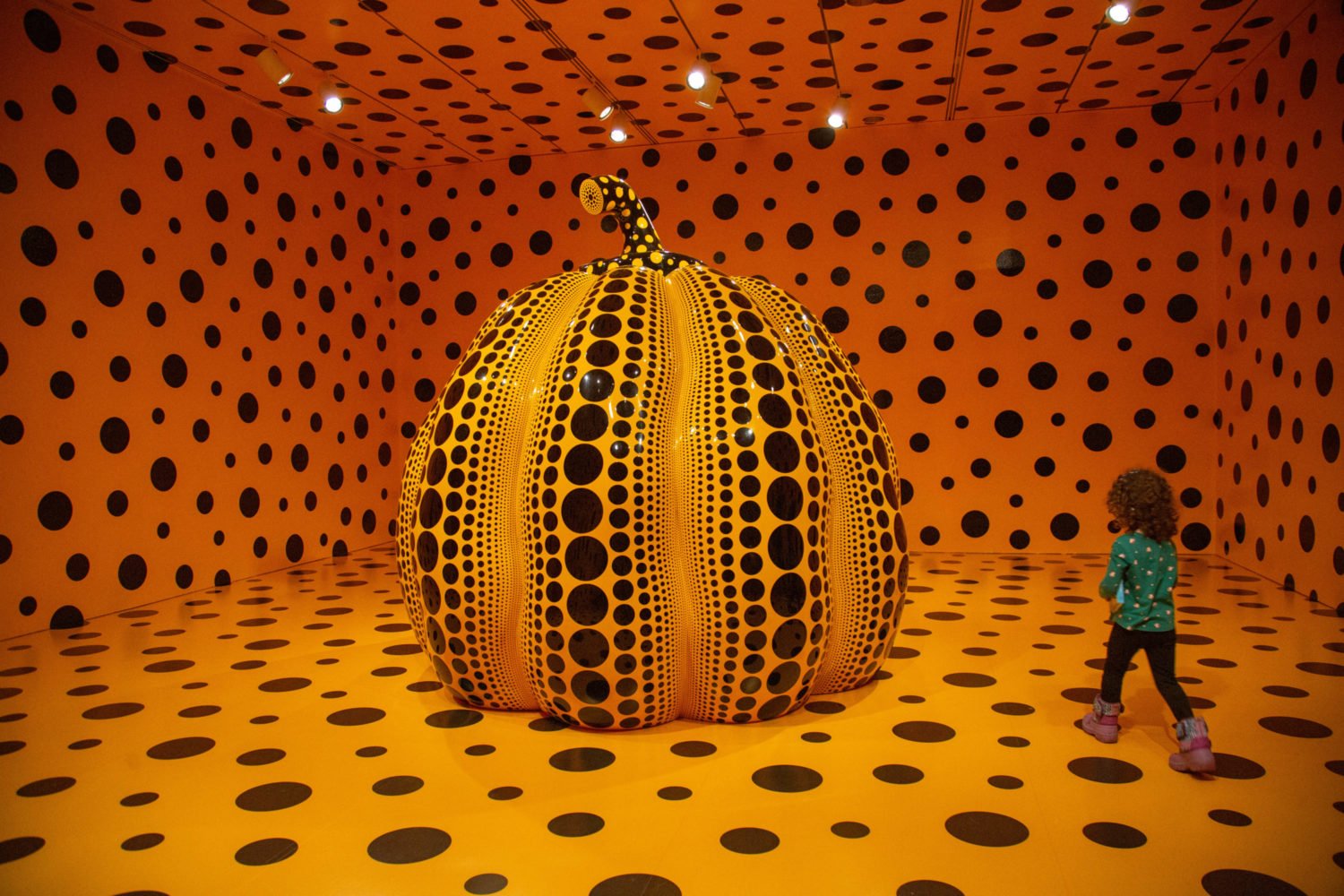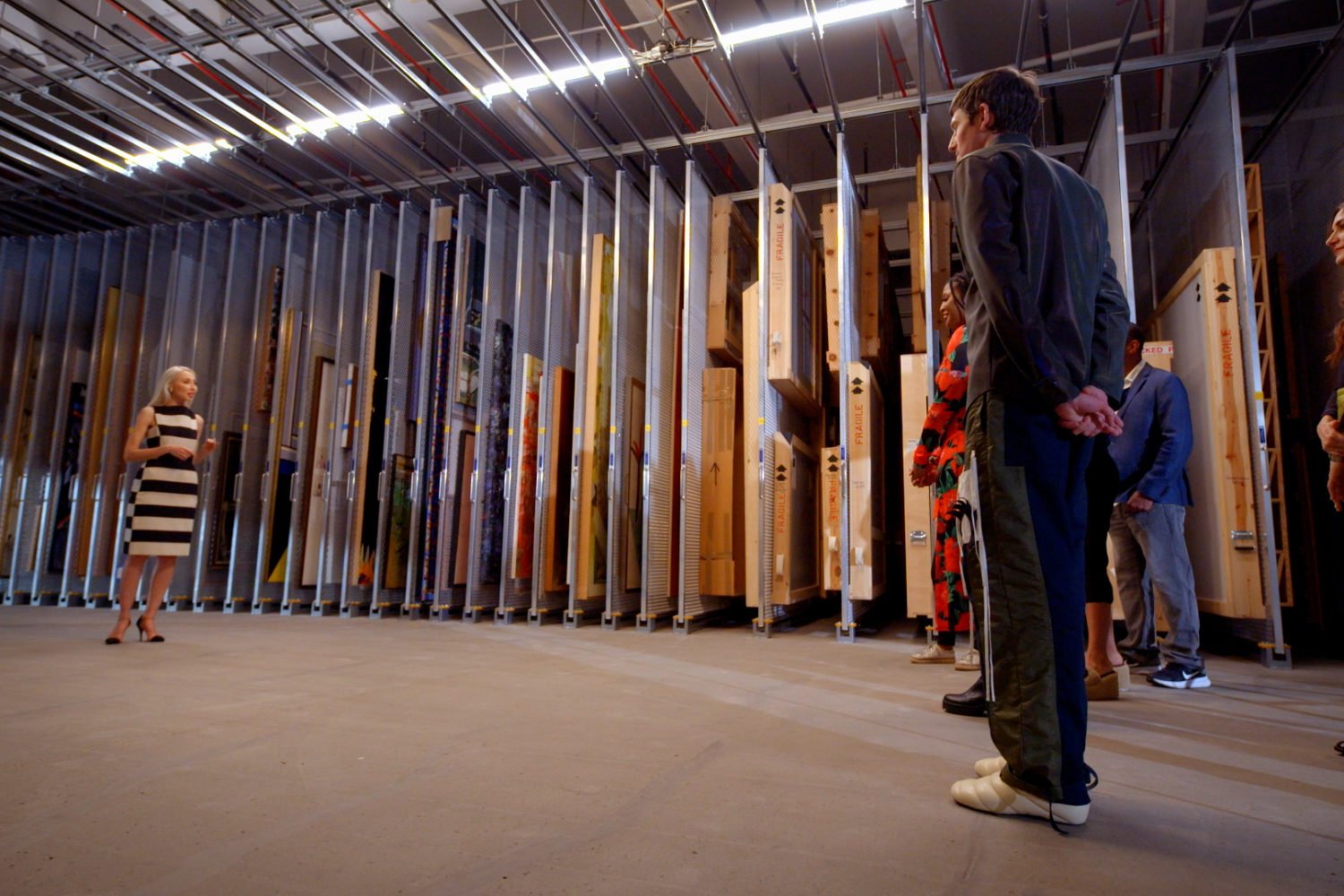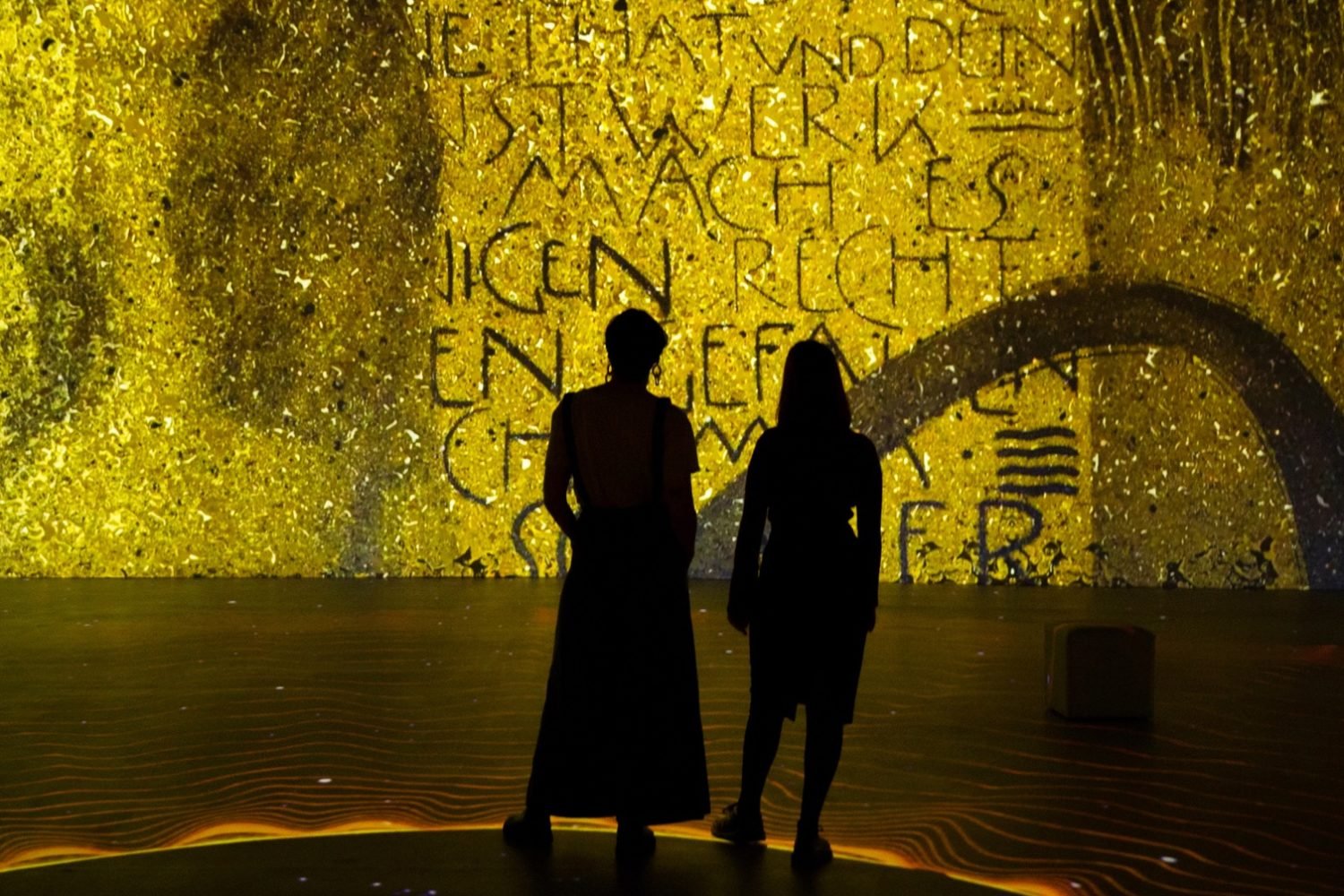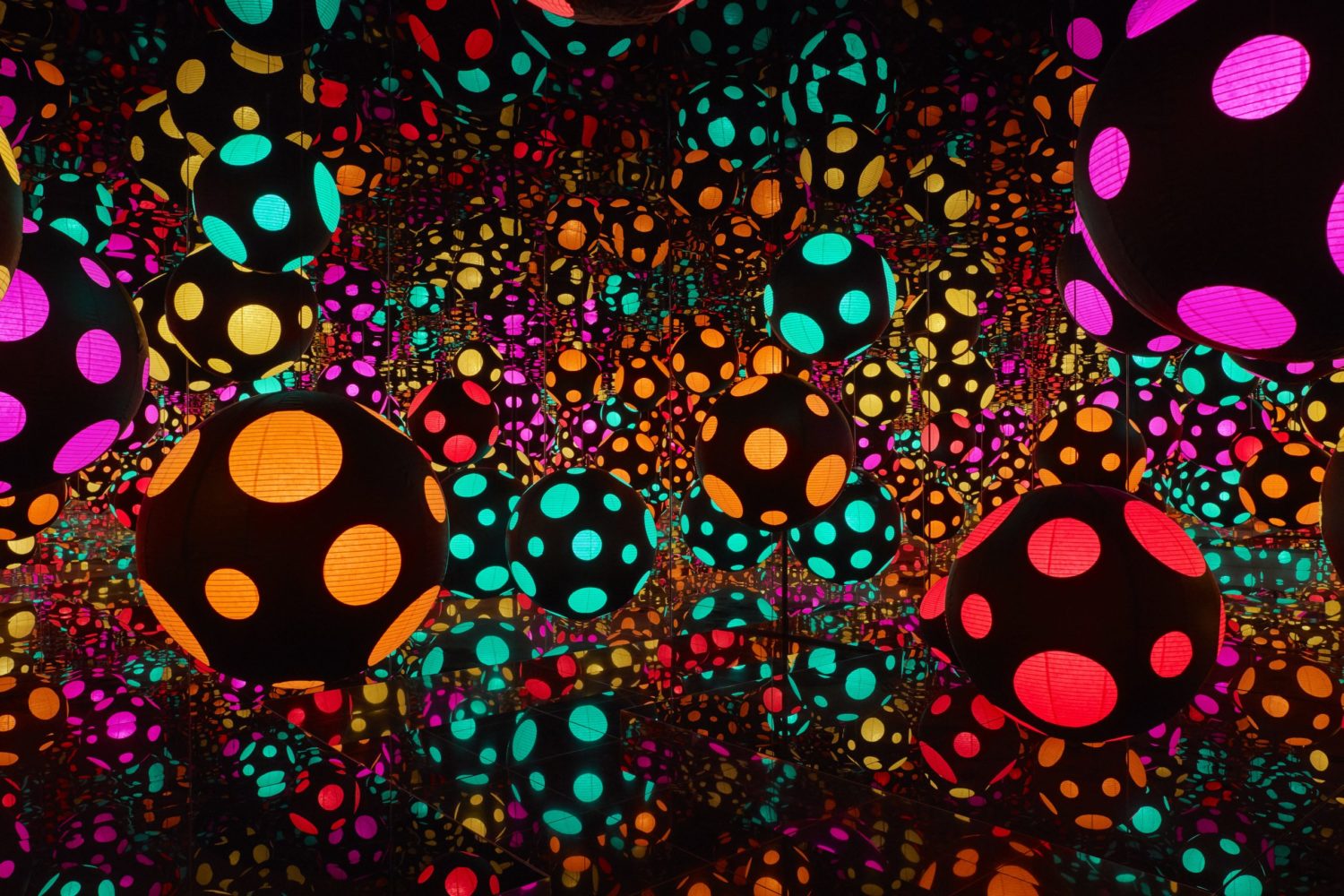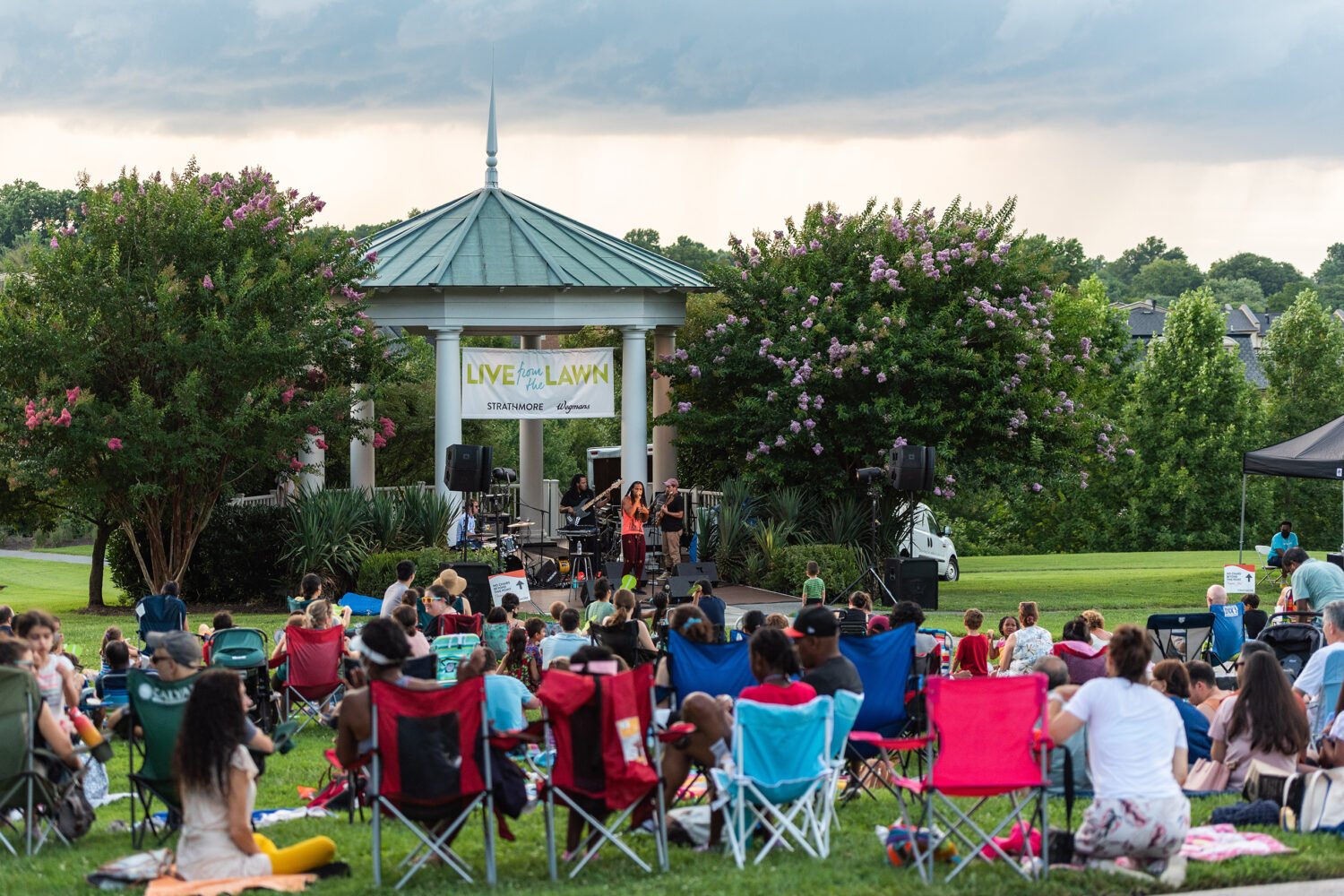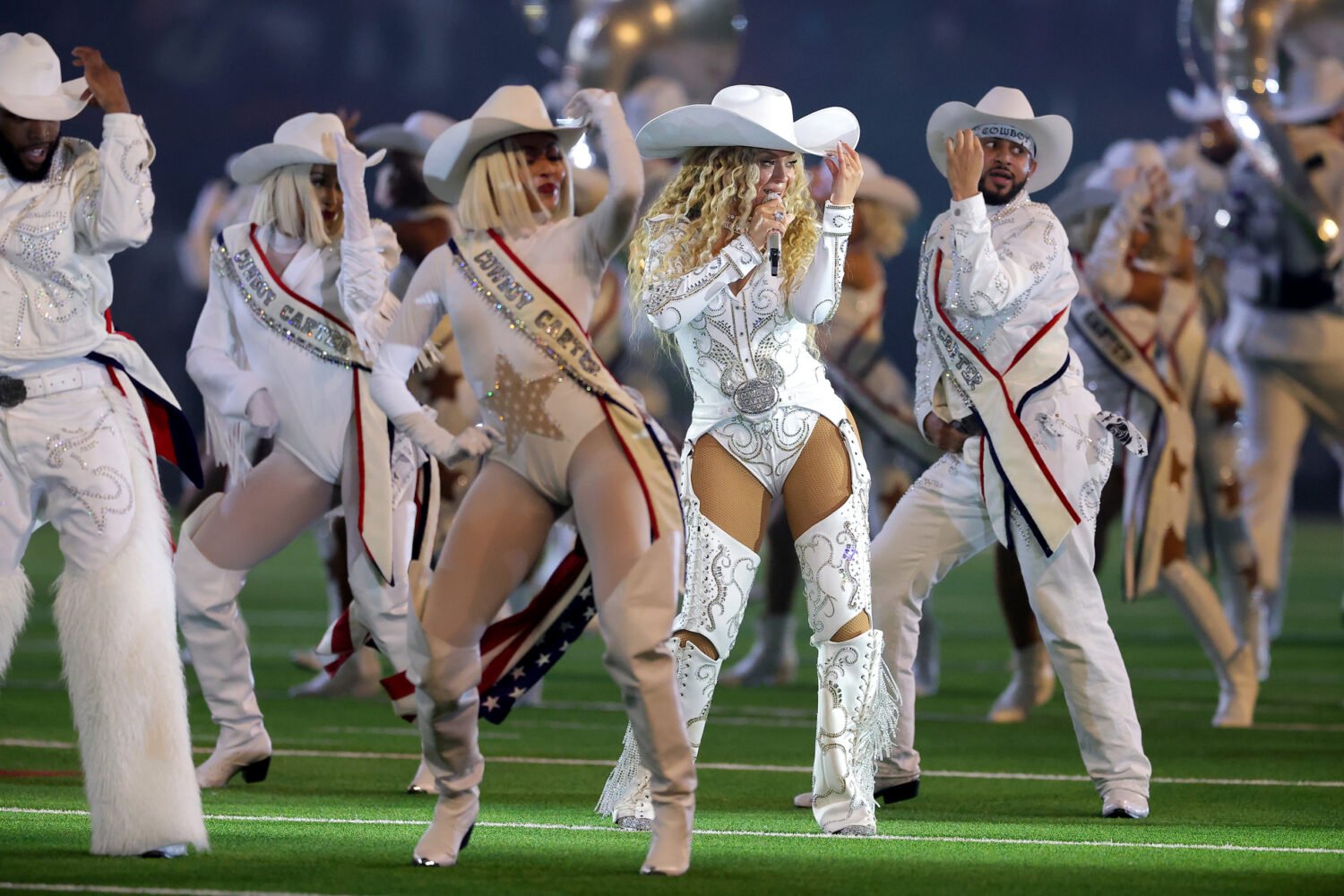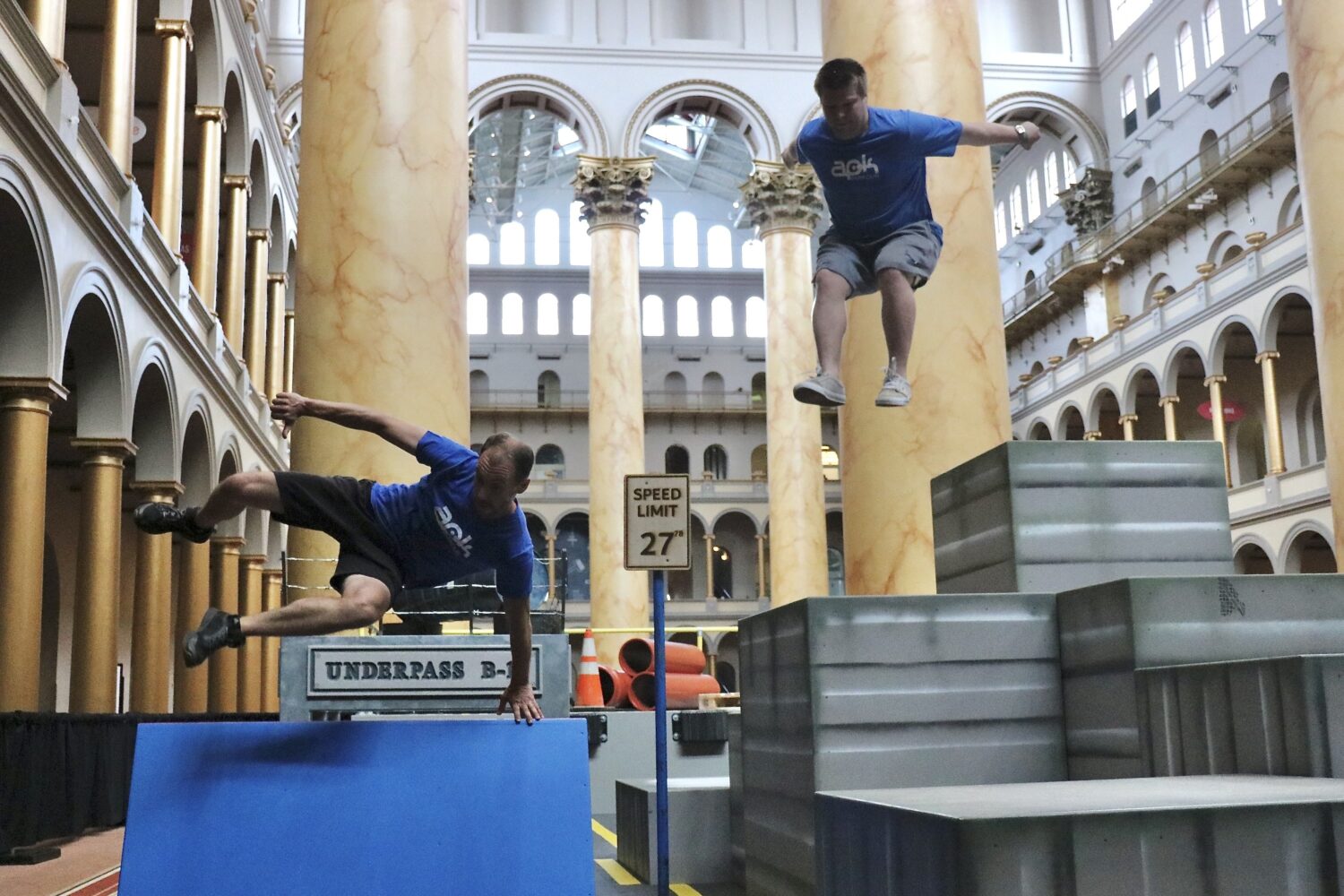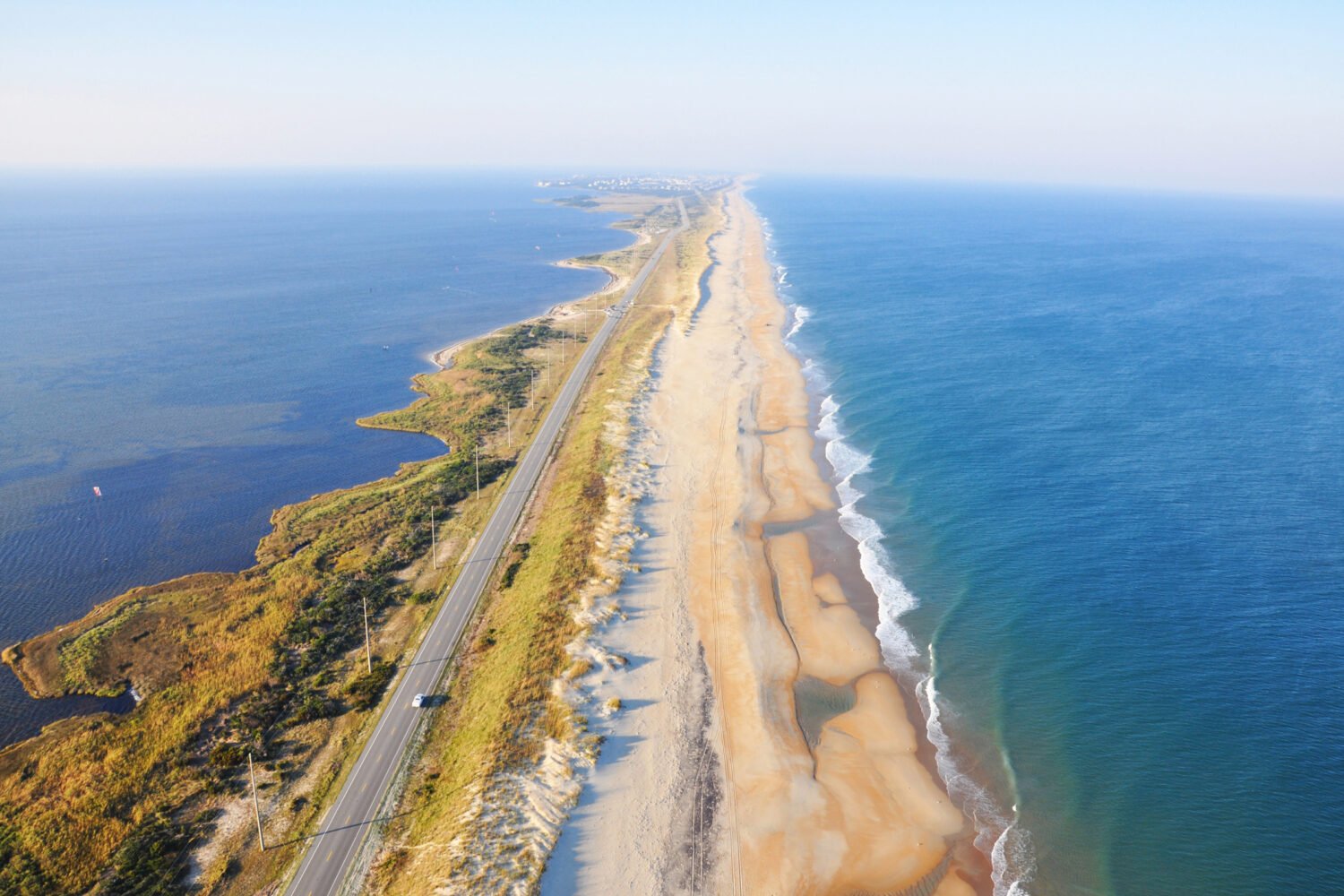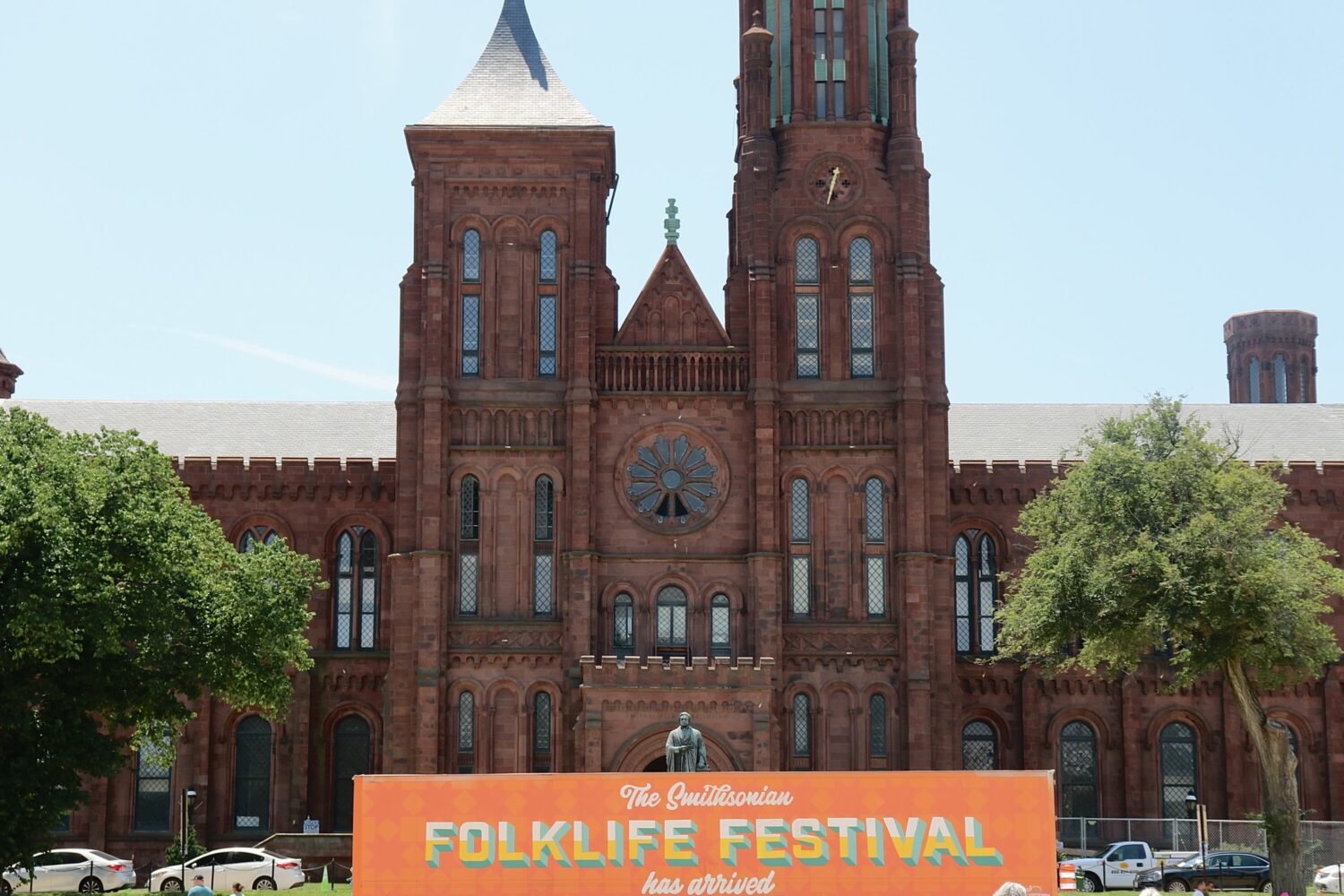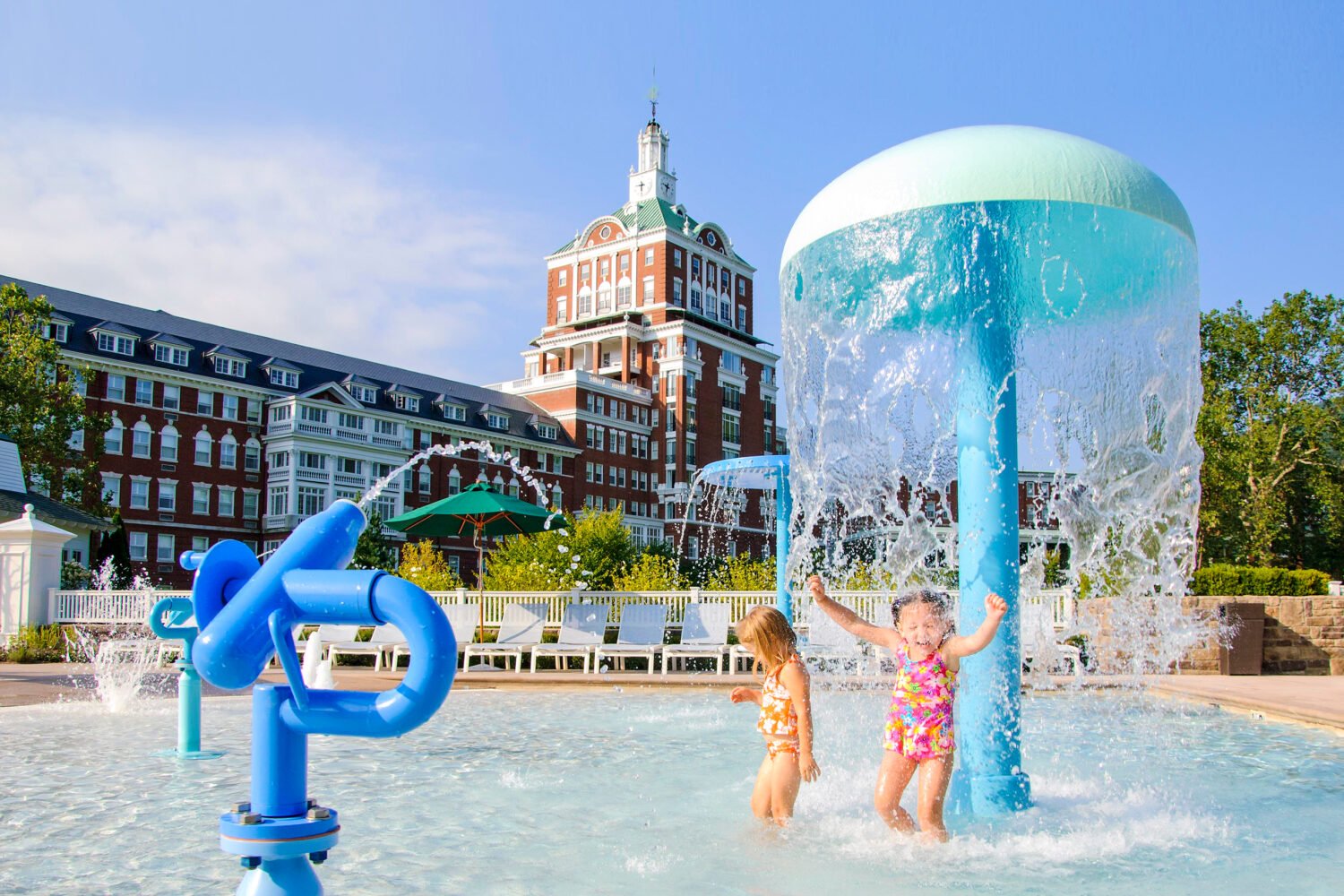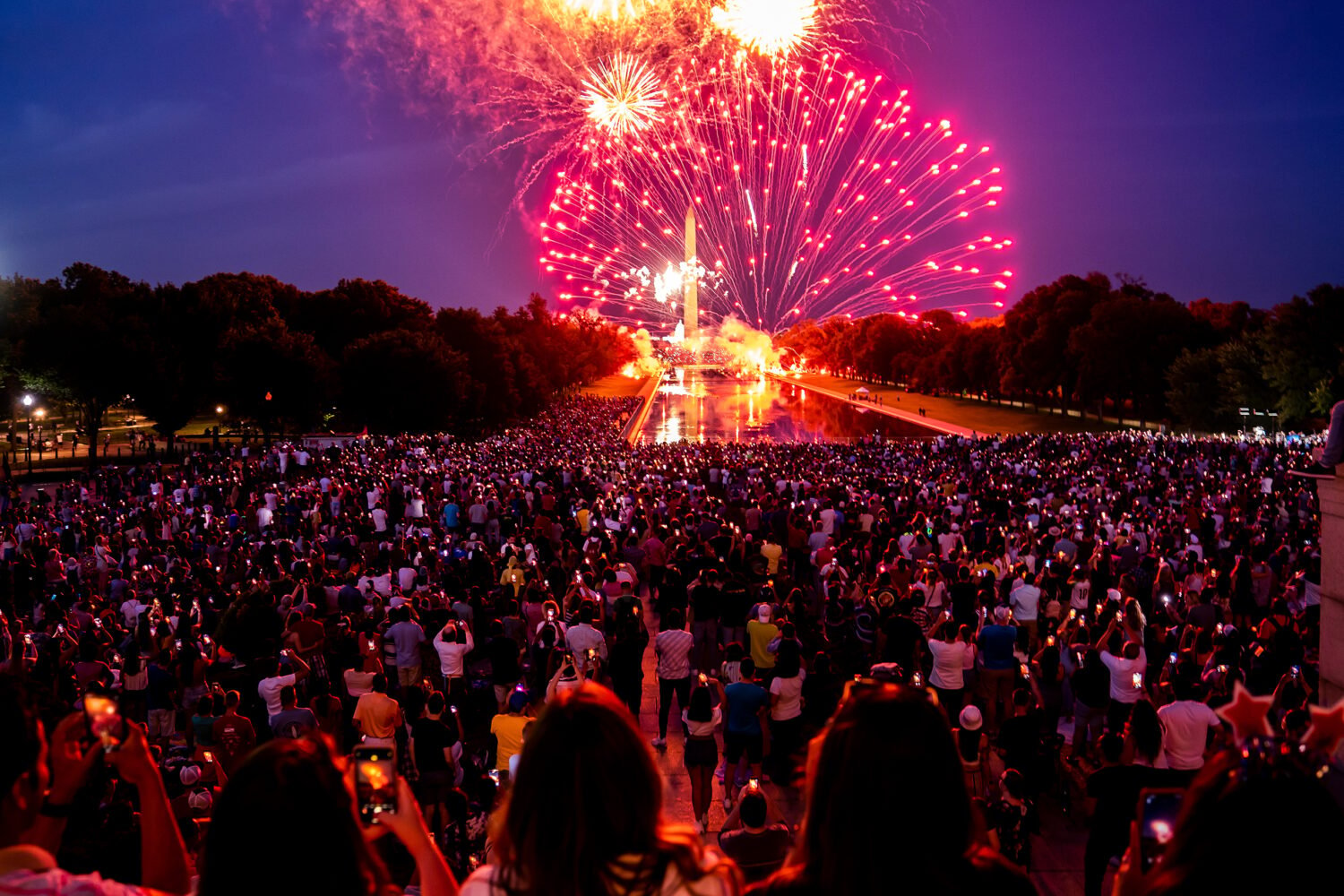Yayoi Kusama created her first infinity mirror room in the 1960s in New York City. She moved there from Japan in 1958 and quickly became active in avant-garde circles with pop art pioneers such as Andy Warhol.
Her early fame was tied to her radical antiwar “happenings” in which naked participants in places like Times Square and Central Park were painted in polka dots. “Publicity is part of my art,” Kusama said at the time. “[Artists] have to be in favor of publicity, good or bad.”
Now 87, Kusama is gaining popularity because of something she could’ve never predicted: the rise of Instagram. Her exhibits are known for drawing long lines and garnering thousands of Instagram likes from people seeking what the New York Times declared “the ultimate selfie.”
The intention of the work is much less superficial. Kusama made art to deal with mental illness: “I fight pain, anxiety, and fear every day, and the only method I have found that relieves my illness is to keep creating art,” she wrote in her autobiography.” She referred to her methods as “art medicine” and “self-obliteration.”
So even if you are just going to the exhibit to snap a selfie for Instagram (we won’t judge you), keep in mind that Kusama lived a long, complicated life before the medium even existed.
Tickets for the first two weeks are sold out, but the Hirshhorn will release free timed passes every Monday at noon for the exhibit’s 14-week run.
